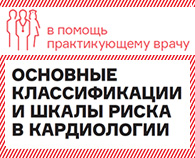NSAIDs May Spark Afib
The risk of atrial fibrillation was higher among individuals ages 55 and older who were using nonsteroidal anti-inflammatory drugs (NSAIDs), a Dutch study showed.
Current use of NSAIDs for 15 to 30 days was associated with a relative 76% greater risk of the arrhythmia compared with not using the drugs at any point during the study period (HR 1.76, 95% CI 1.07-2.88), according to Bruno Stricker, MB, PhD, of Erasmus Medical Center in Rotterdam, and colleagues.
The higher risk remained even when NSAIDs were not used currently but had been in the prior 30 days (HR 1.84, 95% CI 1.34-2.51), the researchers reported online in BMJ Open.
Other recent studies also have identified a link between NSAIDs and atrial fibrillation, although much of the prior research in this area has been limited to retrospective case-control studies or analyses of claims databases, which provide a limited ability to account for potential confounders, according to Stricker and colleagues.
The current analysis was based on data from the Rotterdam Study, a prospective, population-based investigation involving adults 55 and older living in the Ommoord district of that city. It included 8,423 individuals (mean age 69; 59% female) who did not have atrial fibrillation at baseline according to an electrocardiogram (ECG).
During follow-up, atrial fibrillation was detected through ECG assessments and medical records and the use of NSAIDs was tracked using automated prescription records.
Over the course of an average of 12.9 years, 857 of the individuals (10.2%) developed atrial fibrillation.
After adjustment for age, sex, and several cardiovascular risk factors, current use of NSAIDs for 15 to 30 days and use within the prior 30 days without current use were associated with a greater risk of atrial fibrillation. Current use for longer than 30 days was not, however, tied to arrhythmia development.
Further adjustment for left ventricular end-diastolic dimension at baseline strengthened the association with current use for 15 to 30 days (HR 3.21, 95% CI 1.22-8.48), but rendered the association with past use no longer statistically significant (HR 1.47, 95% CI 0.60-3.62).
The results support previous studies in this area, "but also suggest that the increased risk occurs shortly after starting treatment and may disappear over time," the authors wrote, adding that "further studies are needed to investigate the underlying mechanisms behind this association."
There are several possible explanations, however.
"It is possible that NSAIDs play a causal role in the development of atrial fibrillation, as they inhibit cyclooxygenase," Stricker and colleagues wrote. "Cyclooxygenase enzymes are expressed in kidney tissue. Inhibition of these enzymes may lead to an increase in blood pressure due to fluid retention, increased peripheral resistance, and attenuation of diuretic and antihypertensive drug effects."
In addition, they wrote, it is possible that the effects of NSAIDs on end-diastolic and end-systolic dimension measured by echocardiography could explain the relationship.
"Moreover, COX inhibition may lead to fluctuation of serum potassium by decreased excretion in the distal nephron," which may trigger atrial fibrillation," they wrote. "However, it is also possible that NSAID use is an indicator of the presence of the underlying inflammatory disease. These underlying inflammatory conditions might be associated with the risk of atrial fibrillation."
Stricker and his colleagues acknowledged some limitations of their study, including the smaller sample size compared with previous studies and the inability to capture over-the-counter use of NSAIDs or the indication for using NSAIDs.
Source: www.medpagetoday.com






